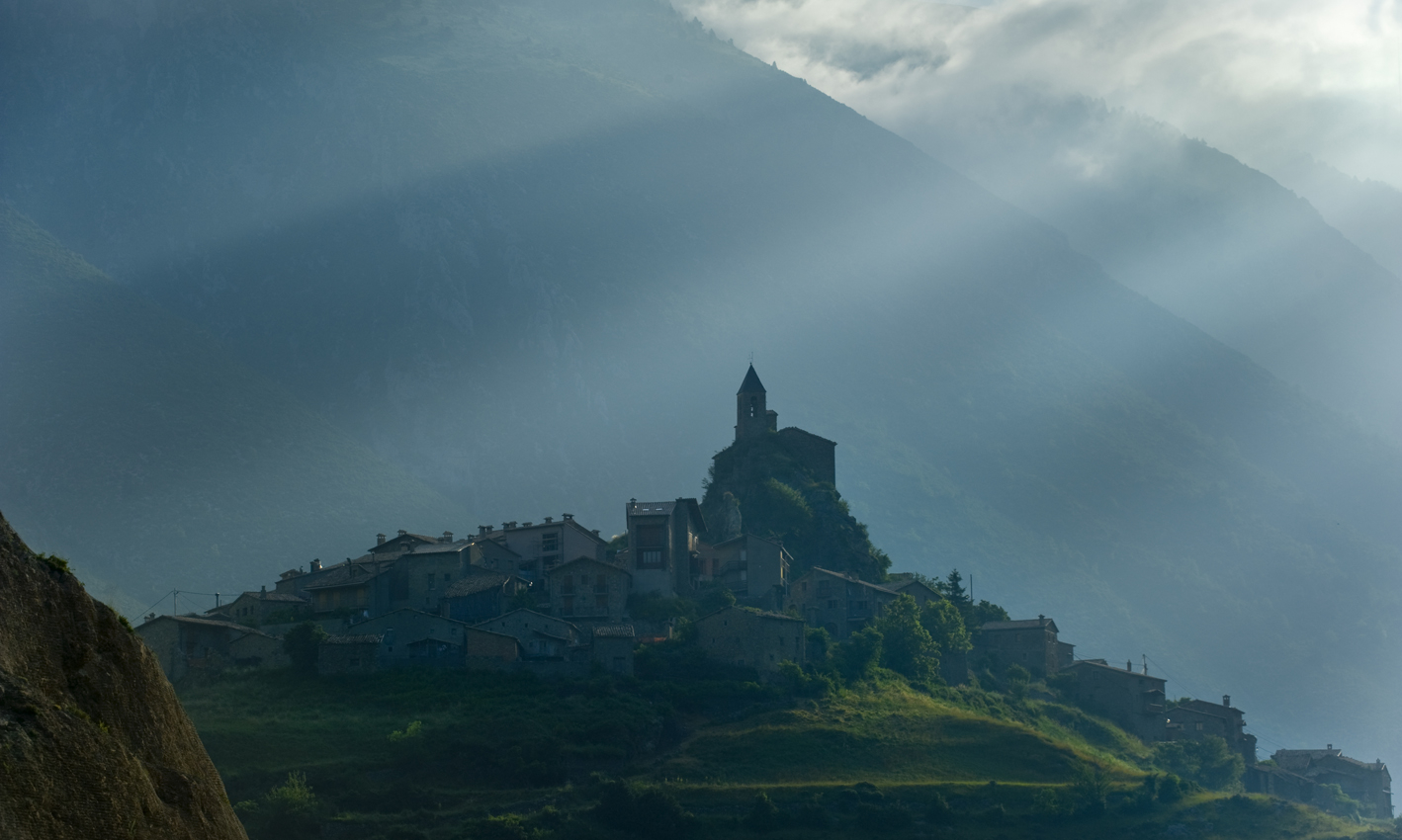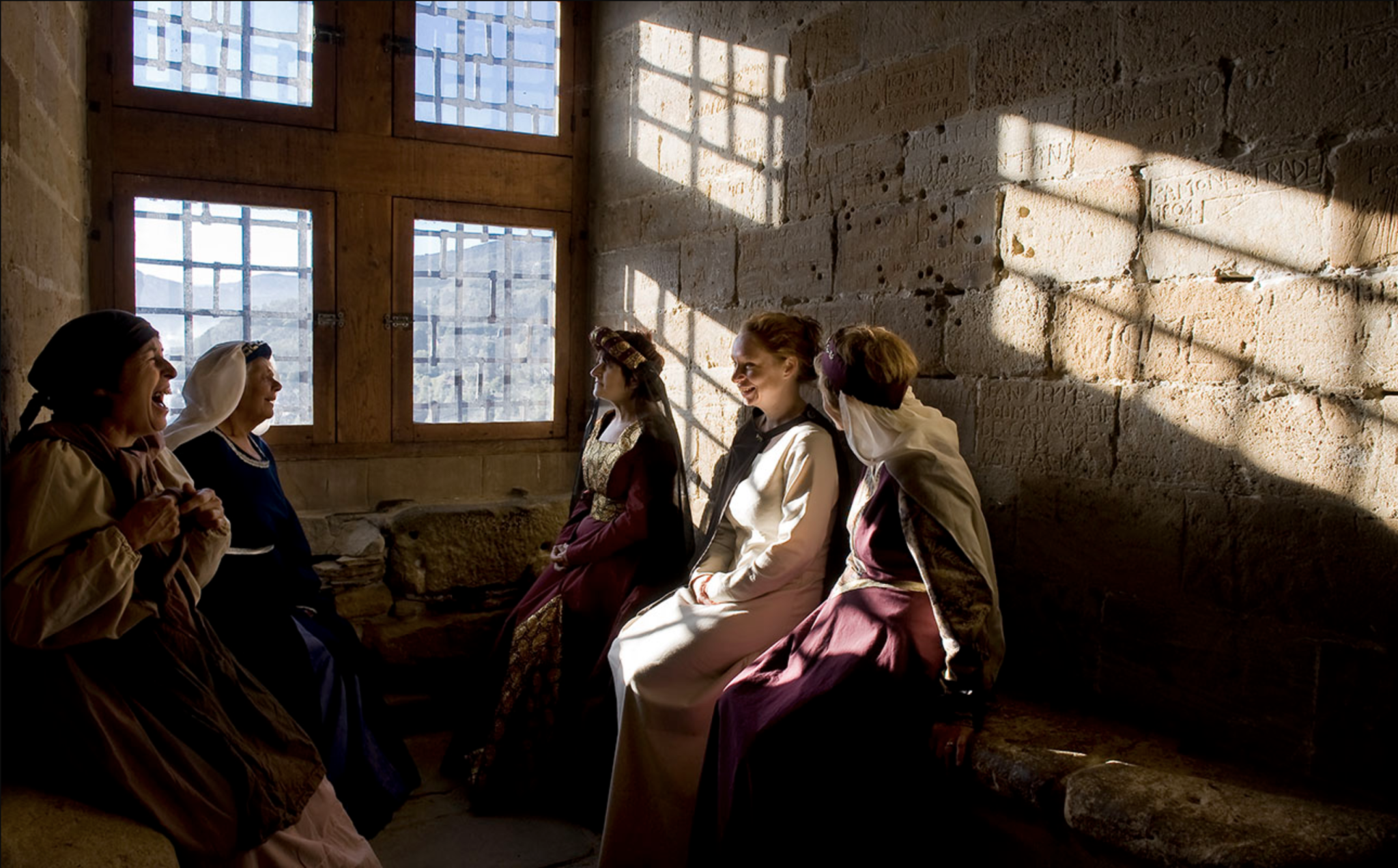
Catalonia
it was a reception area
of the persecuted Cathars

When talking about the Cathars, or good men, we often underestimate the geopolitical repercussions that this religious phenomenon would cause throughout the medieval history of Europe.
The immovable Catholic Church of the 12th and 13th centuries shared the most rigid feudal principles with Paris. The Papal States were, moreover, sovereign over a territory that covered half of present-day Italy, and Rome, as the head of the hegemonic Church in the West, was prepared to fight to the death against the dangerous spirit of free citizens that spread across the wealthy and splendid counties of Occitania. A spirit that, arm in arm with the most popular Cathar evangelical message and the sovereignty that the Casal de Barcelona was expanding across the Occitan counties, threatened the geopolitical balance, religious dominance and tributary vassalage that Rome imposed on the feudal mosaic of Europe at the time.
So, with the crusade against the Cathars, the Pope of Rome would, on one hand, destroy an independent Christian Church that had begun to take root strongly in Occitania, and on the other hand, pave the way, once and for all, for the growing Catalan expansion into northern Occitania.
Indeed, mercenary armies, on a holy war mission against heretics, would devastate the Languedoc, and after the genocide of entire populations, they would conquer—in the name of France—the rich Occitan lands where the most cultured and developed society in Europe thrived. The intervention of King Peter the Catholic, defending the interests of Catalonia-Aragon and his Occitan vassals, and his confrontation with the alliance of Rome and Paris would culminate in the defeat at Muret, a historical crossroads that has never been fully acknowledged. This battle would shape the subsequent evolution of the French, Occitan and Catalan national realities up to the present day.
What, then, was this new and revolutionary religion that would be used by kings and popes, and that would give rise to an unprecedented cruel and bloody crusade of Christians against Christians and the Occitan genocide? Catharism
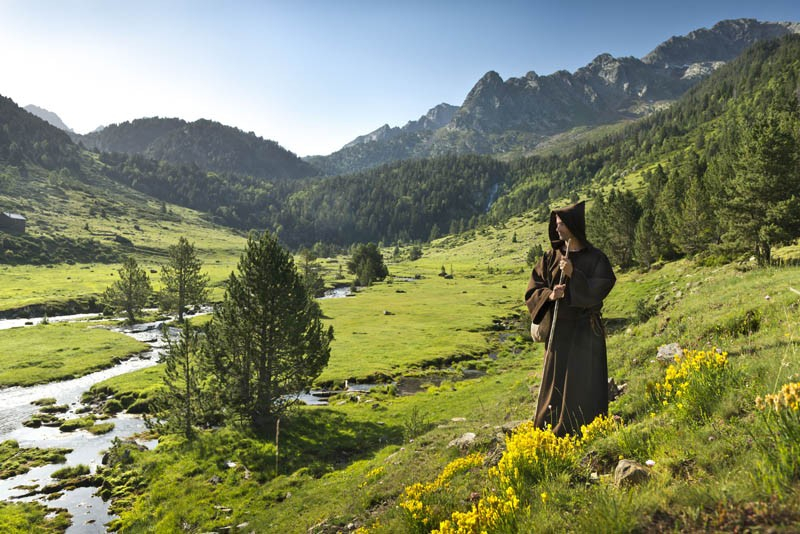
In contrast to the ostentatious, corrupt and authoritarian Roman Catholic Church of the 13th century, Catharism promoted a Church based on spirituality and charity, with a return to the purer and simpler values of early Christianity.
Catharism, by the end of the 13th century, was spreading across Lombardy, the Holy Roman Empire, Provence, the Catalan Pyrenees and especially across the Languedoc. It rejected materialism, idolatry, war even in self-defence, feudal values, and condemned the costly, arrogant and hierarchical ecclesiastical organisation of Rome.
The Cathars, also called good men and good ladies, and also good Christians or friends of God, rejected temples and cathedrals. God, they affirmed, only resides in the hearts of the faithful. A white tablecloth spread over a table or stone, in any clearing in the forest or cave, served as the altar, upon which was placed a New Testament translated into the Occitan language, a translation strictly forbidden by Rome. Their only prayer was the Our Father, and they blessed the bread and shared it among the faithful, just as was done in the early days of Christianity.
The preachers of the Cathar Church were called pure and ancient. The inquisitors, later, would call them perfect. They could also be women, something unusual in 13th century Europe. Good ladies were only distinguished from other women because they wore their hair tied back and hidden. The men, with long hair and beards, wore long black tunics and garments made of hemp fabric. For a belt they wore a rope with as many knots as they had made vows (Saint Francis copied the habit). They went in pairs, with the Gospel of Saint John, always carrying a small personal pot to avoid cooking with fats.
Although Catharism imposed strict rules on its perfected ones—such as renouncing material things like sexual relations and eating meat—it was, on the other hand, tolerant and flexible with simple believers. These were ordinary men and women who, far from fanaticism or mystical revelations, sought spiritual refuge from the rigid severity and intolerance of the Catholic fundamentalism of the time. It is important to remember that the Catholic Church of that time shackled people and complicated their lives with an endless string of tithes, penances, funerals, censures, threats and other impositions.
Unlike the Catholic clergy, the Cathar preachers were humble and austere, yet cultured and skilled people. Many were weavers, and the most educated practised medicine. Thus, when a pure one preached, people came to him with respect and admiration. Before the crusade, almost all Occitan nobles and knights—whether Catholic or Cathar believers—welcomed the good men and good women with respect into their castles, to the point of entrusting them with the education of their children. Entire monasteries converted to Catharism, and even Catholic bishops, terminally ill, sought comfort, secretly, from Cathar elders.
The Cathar influence spread unstoppably to all classes of the population: lords, knights, bourgeois, merchants, artisans, farmers and, above all, among women.
The Cathar Church had a network of community reception centres that, once the crusade was launched, would become refuges. They were shelters where women of all ages and conditions—orphans, widows, noble ladies and peasant women—lived, worked and were educated, especially in spirit and in the art of weaving, in an environment of freedom and dignity unimaginable at the time.
At the turn of the 12th and 13th centuries, the most advanced culture of medieval Europe flourished in the Occitan counties. The solid Greco-Latin foundation and the effectiveness of Roman law had withstood, first, the Visigothic occupation and, later, the shorter Saracen one. The legacy of classical civilization had been preserved in the Pyrenean valleys in a string of monasteries—Sant Pere de Rodes, Sant Quirze de Colera, Sant Miquel de Cuixà, Sant Martí del Canigó, Sant Joan de les Abadesses, Ripoll—which had not only safeguarded Greco-Latin culture but also compiled new translations of the classics from Córdoba and Toledo, along with the best of Islamic and Jewish thought. The Romanesque art and culture emerging on both sides of the Pyrenees would be directly linked to the Catalan-Occitan cultural space and environment.
Languedoc and, by extension, all of Occitania therefore illuminated a developed, refined and tolerant society, which was the expression of a civilization—that of the troubadours—more evolved and advanced than that of the French and other northern peoples. Philosophy and other intellectual activities were widely cultivated there. Nobles and knights actively participated, encouraged it and integrated into cultured and literary circles at a time when the northern nobility could neither read nor write. Europe would have to wait until the Renaissance three hundred years later to witness a cultural explosion like that.
There was prosperity throughout Occitania. The strong demographic increase, fertile agriculture, increasing livestock farming and an expanding industry, especially textiles, led to the creation of new towns and burgs. An unprecedented urban civilisation developed and spread throughout the Occitan and Catalan cities, fostering an open economy that contrasted with the rural, closed and rigidly feudal economy of the rest of Europe. Growing trade encouraged the permanent exchange of people, goods and ideas between the countryside and the city. Ports such as Narbonne and Montpellier, and cities in the interior such as Toulouse, Nimes and Carcassonne, became centres of great economic activity and wealth-producing centres.
In this context, it is very significant to note how Catharism fit in with the interests of all classes of this evolved Occitan society. The great lords were filled with satisfaction that a religion advocated the suppression of ecclesiastical feudalism and the temporal power of the Church.
The bourgeoisie welcomed with sympathy an interpretation of the Gospel message that, unlike Catholicism, not only did not condemn mercantile and financial activities, but actually encouraged them. In the Cathar dualist worldview, the artisan and commercial world represented good, in contrast to feudal rights and privileges, which represented evil.
However, it would be among the popular classes where the Cathar message would be most successful, by promoting, with the exemplary preaching of good men, the return to the values of primitive Christianity. The Cathar message was the original Christian message of salvation and comfort for the poor, conveyed in a simple, spiritual and understandable language, far removed from the incomprehensible Latin rhetoric used by the distant and bureaucratised Catholic Church of the time.
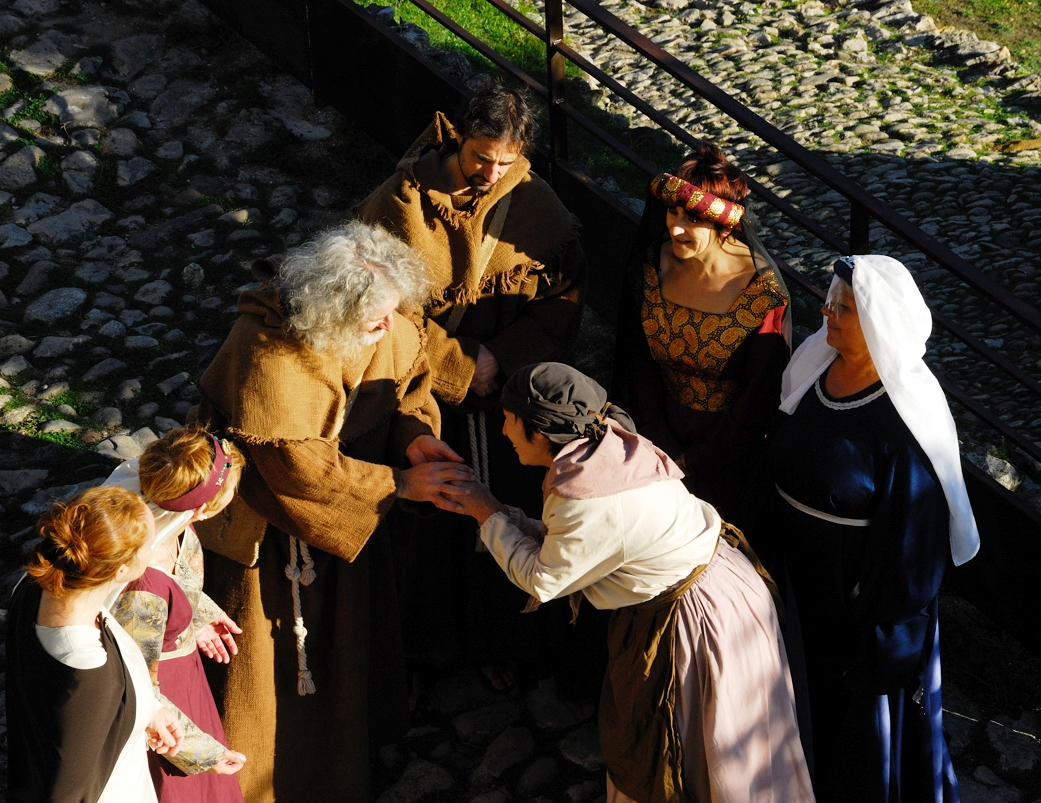
Catharism aims to recover the religious spirit of the primitive Christianity of the first apostles, with a special predilection for the Gospels of Saint John and texts of Saint Paul, accompanied by a rejection of the Old Testament.
According to the Cathars, the early Christian Church became corrupt as soon as it was recognised and assumed by power, that is, by the Roman Emperor Constantine.
It should be noted that most of the documentary and informational sources about Catharism come from the processes initiated and archived by its main enemy: the Church of Rome. The transcription of the confessions extracted from heretics by the courts of the Inquisition was generally carried out by uneducated officials who were not at all inclined to reflect the complex and objective reality of Cathar thought. Consequently, the simplest and most popular view of Catharism has been transmitted and disseminated, with a caricatured image full of clichés, a vision far removed from the Cathar gnosis and metaphysics that gave philosophical support to the doctrine of the good men. In fact, Catharism always had educated teachers of a high cultural level who were concerned with providing Cathar doctrine with consistent intellectual coherence.
Catharism, for example, is the only religion that admits the existence and importance, within a conception of the cosmos, of absolute chance and chaos. The Cathar message, therefore, was at once philosophy and metaphysics, religion and cult.
Cathar dualism
The Cathars asserted the existence of two eternal and irreconcilable principles: the god of Being and Good, creator of the invisible and incorruptible world of good spirits, immutable, and the god of Evil, creator of the material world, corrupt and chaotic.
The good eternity, infinitely stable, confronts the bad eternity, composed of material and spiritual elements—evil spirits—that are unstable and crude, making up this world, with changing elements in constant contradictory agitation.
The ethical dualism of Christian thought—good versus evil, the good spirit versus the flesh, the higher versus the lower—is, therefore, interpreted by the Cathars with a cosmological dimension.
Faced with the Catholic proclamation of a supreme God and an inferior devil, whose evil is manifested in human beings and their acts, Catharism grants Evil a broader category that is embodied in matter.
Every material thing —the world, power, and so on—is intrinsically evil, while Good is a pure being or spirit, disembodied, without matter; it is the God of Love.
The universe, therefore, is the work of the God of Evil, the king of the world (Rex Mundi).
Human beings have a dual nature. Their body, material and corruptible, belongs to Satan, while their soul or pure spirit belongs to God. Satan, the organiser of matter, is said to have caused the revolt of the spirits—the angels—through his fall and imprisonment within matter—the bodies—from which they could only be freed through atonement and purification.
Jesus was, according to the Cathars, an angel sent by God to teach men the path of purification and liberation of spirits: the path to heaven.
His death on the cross should be interpreted as a symbol, but without any salvific purpose or effectiveness for humanity.
For the Cathars, redemption must be sought by oneself, through one's own spiritual development. They therefore rejected the exaltation and adoration of the cross, which even became a symbol of the Rex Mundi, lord of the material world.
The worship of the cross, therefore, like that of images, would constitute idolatry and an outrage to the divine nature of Good.
In contrast to the simplistic, yet terrifying, vision of the devil offered by the Catholic Church, the Cathars opposed a more evolved concept of Lucifer as a rebellious angel, not spiritual and the embodiment of the material world, which had to be fought with the path of spirituality.
The satanic world organisation, according to the Cathars, will be destroyed at the end of time. But Evil will continue to subsist in the set of chaotic elements. The Earth, already abandoned by all good entities and saved souls, will catch fire and become the true hell, the natural and exclusive habitat of the devil left to himself. In eternal impotence, he will no longer be able to dominate Being or corrupt it, nor do anything against the God of light, of the just and of Good.
For the Cathars, time was transience, change and corruption by definition, as opposed to the permanent stability or eternity of the Good.
The Cathars believed in the successive reincarnations of souls or spirits in an ascending sense of improvement, progressive purification and approach to Good, and therefore distance from the material and corrupting Evil of bodies.
Instead of accepting the second-hand faith of the Catholics—and the intermediary role of the Roman Church—the Cathars only accepted direct and personal knowledge of God, in defence of the religious and mystical experience perceived firsthand.
Sexuality
The reproduction of mortal and material Evil could only be avoided by renouncing human sexual reproduction. The Cathar Church, therefore, promoted earthly chastity in order to get closer to primordial divine love.
In practice, however, the Cathars were realists. While they recognised that the procreation of the flesh meant the reproduction of material Evil, they were not so naive as to prohibit sexuality, which they accepted as a lesser evil among believers. And while chastity was required of the pure, even these masters and pastors of the Cathar Church were often elderly men and women who had already started a family before. The figure of Esclarmonde de Foix is a very significant example. It is assumed that the Cathars practiced some form of birth control and abortion, which must have provoked the easily imaginable wrath of 13th-century Rome.
The Melhorament (Improvement) was a ritual through which the believer reaffirmed their fidelity to the Cathar Church, greeted the master or pure one, and asked for help in improving.
The Consolament was the ritual or spiritual baptism through which, by a simple laying on of hands, one pure would ordain another. It was also the rite with which those who were going to die were assisted, whether they were pure or believers.
The aim of the Consolament was to prevent the soul, after death, from transmigrating to another material body, instead of ascending towards the eternity of Good.
The Endura was the mystic suicide or abandonment of those who, after receiving the Consolament, and at the threshold of death, due to illness or old age, requested to be left without food.
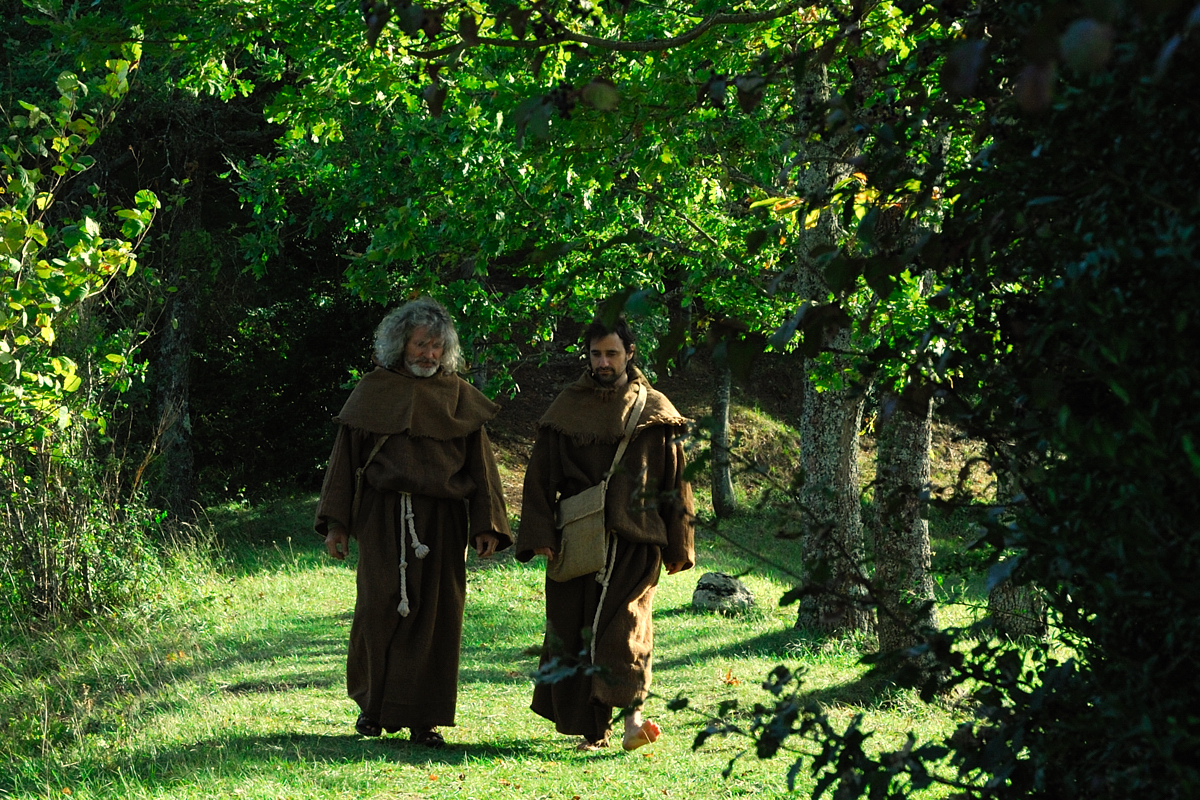
For the Cathars, there is only one system through which creatures can begin the path of salvation and connect with God, and that is charity.
Charity becomes the bond of love that unites men and women with God, because it gives them ontological identity and grants them a benign and incorruptible spirit, unlike evil spirits and the whole of material things, all of which are corrupt.
He who does not have charity does not have a defined identity. Evil spirits have been cast outside the will of Good, which is eternity and permanent stability, and therefore, they do not exist.
Faced with the masculine and authoritarian principles of the Roman Catholic Church, the Cathars opposed a feminine, tolerant and charitable principle of religious sentiment.
The Cathar doctrine could be summarised in three principles: to love one's neighbour as oneself, not to harm or take the life of either humans or animals, and to spiritualize oneself, to divinize oneself until the soul—at death, without regret—abandons the body.

Catalonia
it was a reception area
of the persecuted Cathars
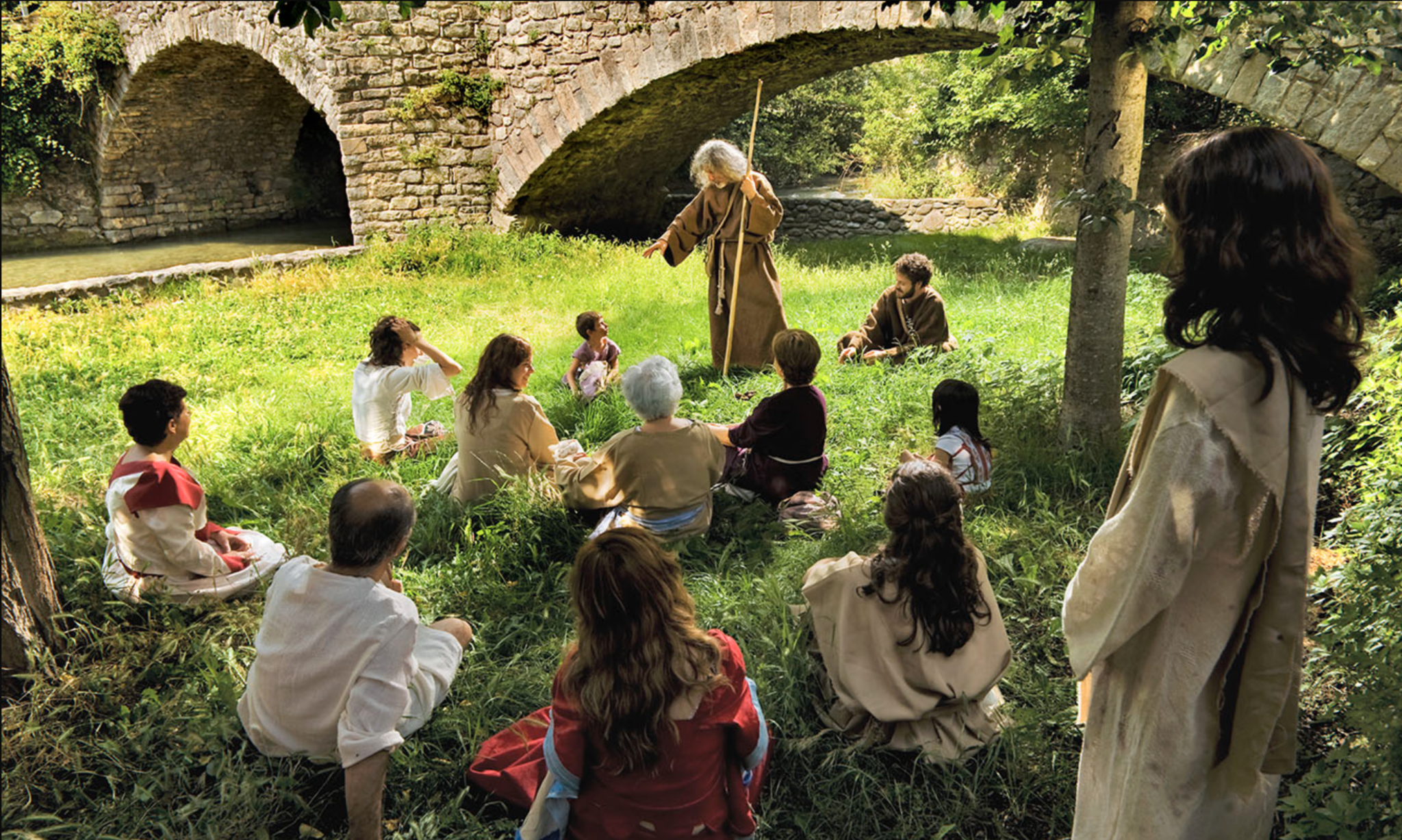
The Trail
it was their space for evangelisation
they rejected material goods
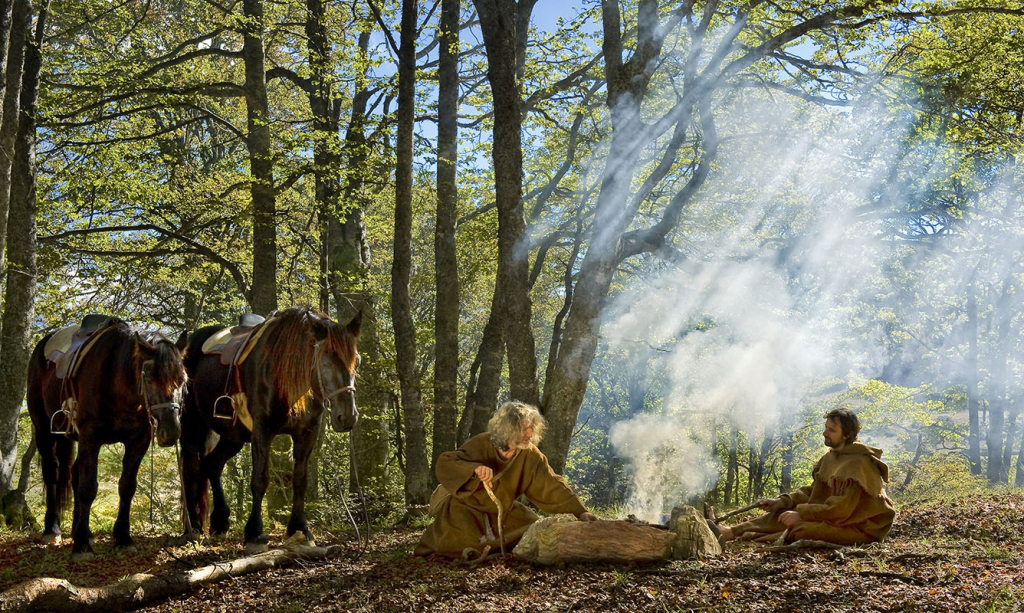
The Cathars
were considered heretics,
persecuted and exterminated
When the crusade against Occitania began to wreak havoc, many Occitan nobles and Cathars sought refuge in the homes of their relatives and friends in the Catalan lands of Roussillon and on the other side of the Pyrenees, especially in Cerdanya, Berguedà and Alt Urgell.. They were very well received, both by the Casal de Barcelona and even by the Catalan Catholic Church, as they represented capital and, above all, repopulation forces for the reconquest against the Saracens. The Occitan Cathars, therefore, would be received, in general, with considerable sympathy. Furthermore, the Catalan social structure was similar to the Occitan one, so Catharism also fit very well with the different interests of the country's social classes.
A good number of the lords from the court of the Count of Roussillon and Cerdanya—Nunó Sanç— embraced the Cathar and Occitan cause and took an active part in the fight against the genocide perpetrated by Simon de Montfort. These large Catalano-Occitan families, with close family, cultural, military and economic ties between them, would later suffer persecution from the Inquisition and would pay dearly for this support of the Cathar-Occitan cause.
William of Niort, brother-in-law of the Count of Roussillon, would be sentenced, for being a Cathar, to life imprisonment. The lord of the castles of Termes and Aguilar, Ramon de Termes—whose son, Oliver de Termes, would enjoy the friendship of King James I—died in the dungeons of Carcassonne, imprisoned by Montfort. Pere de Saissac, Viscount of Fenollet and Illa—whose descendants would go on to play a prominent role in the history of the Kingdom of Mallorca—was condemned as a heretic after his death (in 1262), and his remains were exhumed to be burned. Bernat d’Alió, lord of the castles of So and Queragut, and married to Esclarmonda—daughter of the Count of Foix and his mistress—had aided the besieged of Montsegur. Bernat d’Alió (or Llo) would be burned alive, as a heretic, in Perpignan (1258).
A prominent Catalan of the Cathar faith was Arnau de Saga, who, like Arnau de Castellbò, participated in the devastation of many churches.
The families of Ot of Parets-tortes, today Peyrestortes, were also Cathars, and their remains, along with those of other Catalan knights who fought against Montfort, would be exhumed and burned as heretics. Ponç de Vernet, a member of the entourage of Peter the Catholic and James I, would also be condemned after death. The courageous Robert de Castellrosselló had better luck. He was imprisoned several times by the inquisitors but ultimately managed to save his life in exchange for going to fight against the Saracens for three years.
Also, the last defender of the castle of Querbús, Jaspert de Barberà, condemned as a heretic, who, along with Oliver de Termes, Ponç de Vernet and Castellrosselló, had accompanied the Count of Roussillon in the conquest of Mallorca, would save his life thanks to the intervention of King James.
Today there are authors who suggest that Bellver de Cerdanya was an important place of passage and arrival for Cathars who, fleeing the bloody Anti-Occitan Crusade and the Inquisition, sought the protection of the lords of Gósol, Josa and Castellbò, among others. Bellver received its charter of settlement from Count Nunó Sanç in 1225, eleven years after the Battle of Muret and in the midst of the Cathar repression in Languedoc. This makes it likely—as Joan Pous i Porta rightly points out—that a large portion of the settlers in the new town of Bellver, taking advantage of the protection and privileges granted by Nunó Sanç, were of Cathar origin. It is suggested that the disc-shaped funerary steles of Pedra and Talló, in Bellver, may bear witness to certain clandestine forms of Cathar worship.
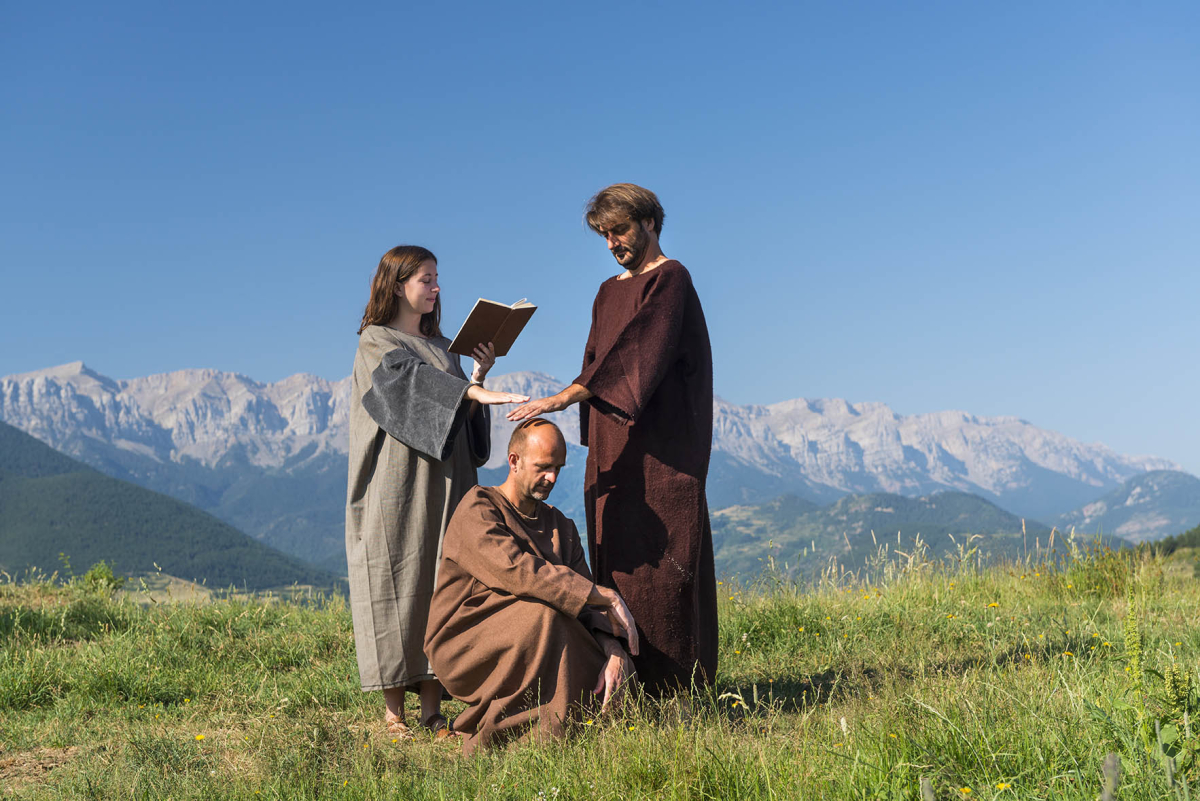
Jordi Ventura tells us that Catharism had already taken root in Catalan lands before the Anti-Occitan Crusade. There are documented Cathar activities in Andorra, Tor de Querol, Bagà, Berga, Josa, Gósol and Castellbò. Some authors also include later vestiges in Puig-reig and Vallcebre. Ramon de Josa, his wife and his brother Guillem Ramon openly adopted Catharism. Ramon de Josa in 1232, after a time of being a detractor. Also Ramon de Castellarnau, Berenguer de Pi and, above all, Arnau de Castellbò protected the heresy without reservation.
It seems that the Church of the Cathars even had deacons assigned to that territory, with residence in Josa, Castellbò and Berga.
The Lord of Castellbò, with the alliance of the Counts of Foix, waged a long struggle against the growing hegemony of the Catholic bishopric of Urgell. In the year 1198, Arnau de Castellbò would desecrate and plunder a good part of the churches of Cerdanya, including those of Coborriu and Pedra. Pous i Porta brings us the anecdotal detail that, unable to enter the church of Talló, the lord of Castellbò took 8 oxen and 18 pigs from his farms.
Arnau de Castellbò participated in the Battle of Muret, alongside King Peter and the Count of Foix. His loyalty to the Casal de Barcelona would later lead him to form part of King James's royal council. The marriage of Arnau de Castellbò's daughter, Ermessenda, to the Count of Foix, Roger Bernard II (1208), would further strengthen a shared alliance of interests against the bishopric of Urgell, while also deepening the Castellbò family's commitment to Catharism. It should not be forgotten that Ermessenda would live at the court of the Foix family alongside the famous Esclarmonde de Foix, her husband's aunt. On the other hand, Arnau de Castellbò's sister, also a Cathar, would help strengthen, by marrying Ramon de Niort, the network of ties and common interests between the great families on both sides of the Pyrenees.
The bishops of Urgell, in permanent litigation over the feudal rights of the county, would not forgive the Castellbòs even after their deaths. The long inquisitorial process, led by the Dominicans Pere de Cadireta—General Inquisitor—and Guillem de Calonge, would end with a condemnation for heresy and the exhumation of the bodies of the viscount and his daughter, who were buried in Costoja (1269). Their bodies were burned and their ashes scattered. Apparently, Pere de Cadireta did not enjoy the scene for long, as, according to Esteve Albert, the entire village of Castellbò stoned him to death just a few steps away from the town.
The Pact of Parity (Les Pariatges d'Andorra: 1278-1288), which ended the conflict between the Castellbò family—and later their successors, the Foix—and the bishops and lords of Urgell, eventually led, over the centuries and up to the present day, to the historical and sovereign reality of the Valls d'Andorra, which is now recognised by the United Nations. This unique legal foundation arose from the agreement between two opposing feudal powers.
During the 13th century, Berga was also an important point of penetration and diffusion of Catharism in Catalonia. Bernard of Bretos and his entire family were great disseminators of the Cathar message. We know that Bernat de Bretós was present in Castellbò, Josa del Cadí, Vall Porrera and the mountains of Siurana de Prades. He also travelled through the Ariège to assist those persecuted by the Crusade. His devotion would lead him to defend the last Occitan Cathar bastion, Montsegur. On 16 March 1244, and before abjuring his faith,Bernat de Bretós chose to die by being burned at the stake in the Prat dels Cremats, alongside 215 other victims, including men, women and children, who lost their lives in that Cathar holocaust.
Another was the story of Arnau de Breton. His relationship with Catharism has been known since 1214. In 1241, he was ordained perfect in Montsegur and then returned to Catalonia to preach among the heretical communities of the Serra de Prades, in the Priorat region. He attempted to flee towards northern Italy, but was captured by the Inquisition halfway. Arnau de Bretós was interrogated by Ferrer de Vilaroja, a Dominican friar who conducted the interrogation of many of the survivors of Montségur. Ferrer de Vilaroja was known for his meticulous and methodical approach, extracting any information that could be useful for his task with the precision typical of the inquisitors of the time. Thanks to this interrogation, we know that Arnau de Bretós and his family had already had contact with the Cathars in Berga around 1214, a date which represents the first confirmed evidence of the presence of Cathars south of the Pyrenean mountain range.
Another very popular character who has been linked to Catharism is the lord and troubadour Guillem de Berguedà. Although it cannot be stated that he was a Cathar, he fought alongside Arnau de Castellbò against the bishop of Urgell, and he treated the Cathars, in his poetry and in his domains, with consideration and sympathy.
From the work of Joan Serra i Vilaró, we learn that in 1255, Galceran IV, baron of Pinós, who had the seat of his extensive barony in Bagà, sheltered some of his subjects who had been imprisoned by the Archbishop of Narbonne due to heresy.
The claim was repeated the following year, in 1256. This time, the Archbishop of Tarragona had fourteen people from Gósol arrested also because of heresy. Galceran de Pinós' subjects were transferred to the prisons of the barony, but they were released soon after, which demonstrates—as Xavier Pedrals i Costa points out—the permissive and tolerant attitude of the various lords in the region toward heretics.
The significance of the village of Gósol in relation to the Cathar heresy is highlighted in a mid-13th-century Inquisition document, which includes the testimony of a local woman, Maria Poca, who states that “there were few inns in Gósol that did not host heretics.” We even know the names of about 14 of them, as they were convicted and imprisoned in the Tarragona prison.
Jordi Ventura also highlights the presence of Catharism in lands of repopulation. It documents an important focus in Lleida, where the Cathars had to pay large sums (1257) for the crime of heresy unearthed by the Inquisition.
Many Cathars would indeed come to repopulate the lands of southern Catalonia and have left evidence of their presence in the towns of Prades, Siurana, l'Arbolí, Cornudella and the mountain of Gallicant.
Whether to follow the traces of Catharism in Catalonia or to delve into the historical and socioeconomic Occitan context in which the Cathar church emerged, developed, and was ultimately exterminated, we suggest reading the rigorous research carried out by Jordi Ventura-Subirats—to whom we consider ourselves indebted—and whose main works are included at the end in the recommended bibliography.
